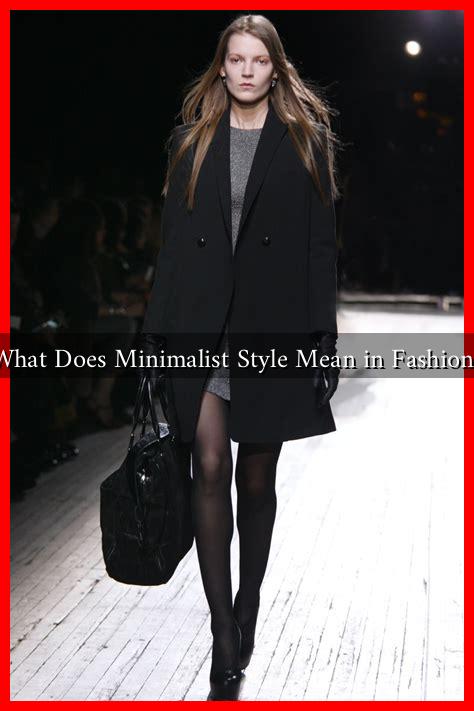-
Table of Contents
What Does Minimalist Style Mean in Fashion?
Minimalist style in fashion is more than just a trend; it is a philosophy that emphasizes simplicity, functionality, and a focus on the essentials. This approach to fashion has gained significant traction in recent years, as consumers increasingly seek to declutter their lives and wardrobes. In this article, we will explore the core principles of minimalist fashion, its historical context, and how it manifests in contemporary style.
The Essence of Minimalism in Fashion
At its core, minimalist fashion is about stripping away the unnecessary to highlight the essential. This style is characterized by clean lines, neutral colors, and a focus on quality over quantity. Here are some key elements that define minimalist fashion:
- Neutral Color Palette: Minimalist wardrobes often consist of muted tones such as black, white, gray, and beige. These colors are versatile and can be easily mixed and matched.
- Quality Over Quantity: Minimalism encourages investing in fewer, high-quality pieces that stand the test of time rather than fast fashion items that quickly go out of style.
- Timeless Silhouettes: Minimalist fashion favors classic cuts and shapes that are not tied to fleeting trends, allowing for longevity in style.
- Functional Design: Each piece in a minimalist wardrobe is chosen for its practicality and versatility, making it easy to create multiple outfits from a limited selection.
A Brief History of Minimalism in Fashion
The minimalist movement in fashion can be traced back to the 1960s and 1970s, influenced by the broader minimalist art movement. Designers like Yves Saint Laurent and Calvin Klein began to embrace simplicity in their collections, focusing on clean lines and understated elegance. However, it wasn’t until the 1990s that minimalist fashion truly gained momentum, with designers such as Jil Sander and Helmut Lang leading the charge.
In the 21st century, the rise of fast fashion and consumerism prompted a backlash, leading many to seek a more sustainable and mindful approach to clothing. This resurgence of interest in minimalism aligns with the growing awareness of environmental issues and the desire for a more intentional lifestyle.
Contemporary Minimalist Fashion
Today, minimalist fashion is embraced by a diverse range of individuals, from high-profile celebrities to everyday consumers. Brands like Everlane, COS, and A.P.C. have built their identities around minimalist principles, offering collections that prioritize sustainability and ethical production.
Statistics show that the minimalist fashion trend is not just a passing phase. According to a report by Statista, the global sustainable fashion market is projected to reach $8.25 billion by 2023, indicating a growing demand for mindful consumption.
Building a Minimalist Wardrobe
Creating a minimalist wardrobe involves careful curation and intentional choices. Here are some tips for building a minimalist closet:
- Assess Your Current Wardrobe: Start by evaluating what you already own. Identify pieces that you love and wear frequently, and consider donating or selling items that no longer serve you.
- Choose Versatile Pieces: Look for items that can be styled in multiple ways. A classic white shirt, tailored trousers, and a little black dress are all great examples of versatile staples.
- Invest in Quality: Prioritize well-made garments that will last. Look for natural fabrics like cotton, wool, and linen, which tend to be more durable.
- Limit Your Color Palette: Stick to a cohesive color scheme that allows for easy mixing and matching. This will simplify your outfit choices and reduce decision fatigue.
Conclusion
Minimalist style in fashion represents a thoughtful approach to clothing that values simplicity, quality, and sustainability. By embracing a minimalist wardrobe, individuals can not only reduce clutter but also make more intentional choices about their consumption habits. As the fashion industry continues to evolve, the principles of minimalism will likely remain relevant, encouraging consumers to prioritize what truly matters in their lives and wardrobes. In a world increasingly defined by excess, minimalist fashion offers a refreshing perspective that champions the beauty of simplicity.

